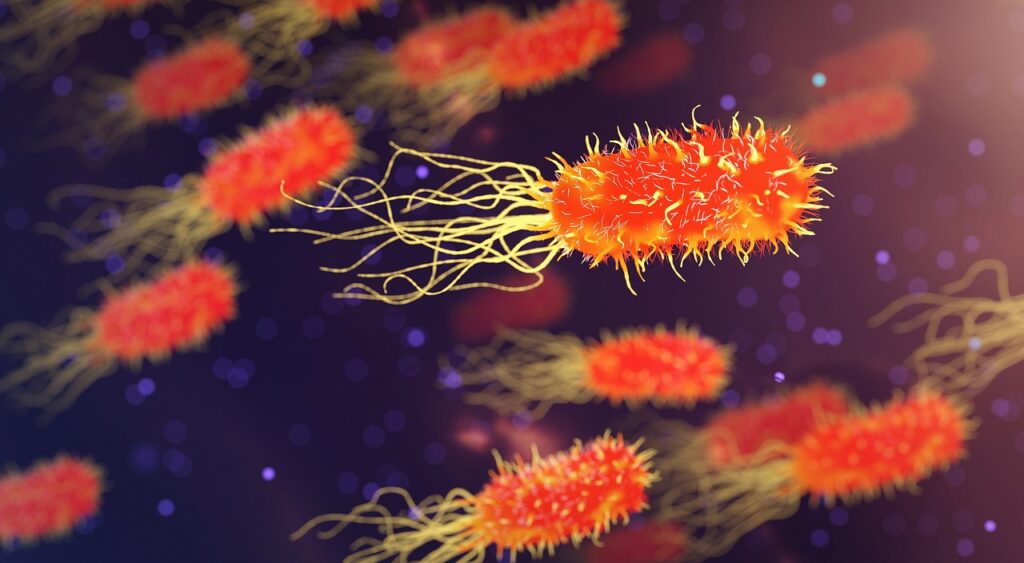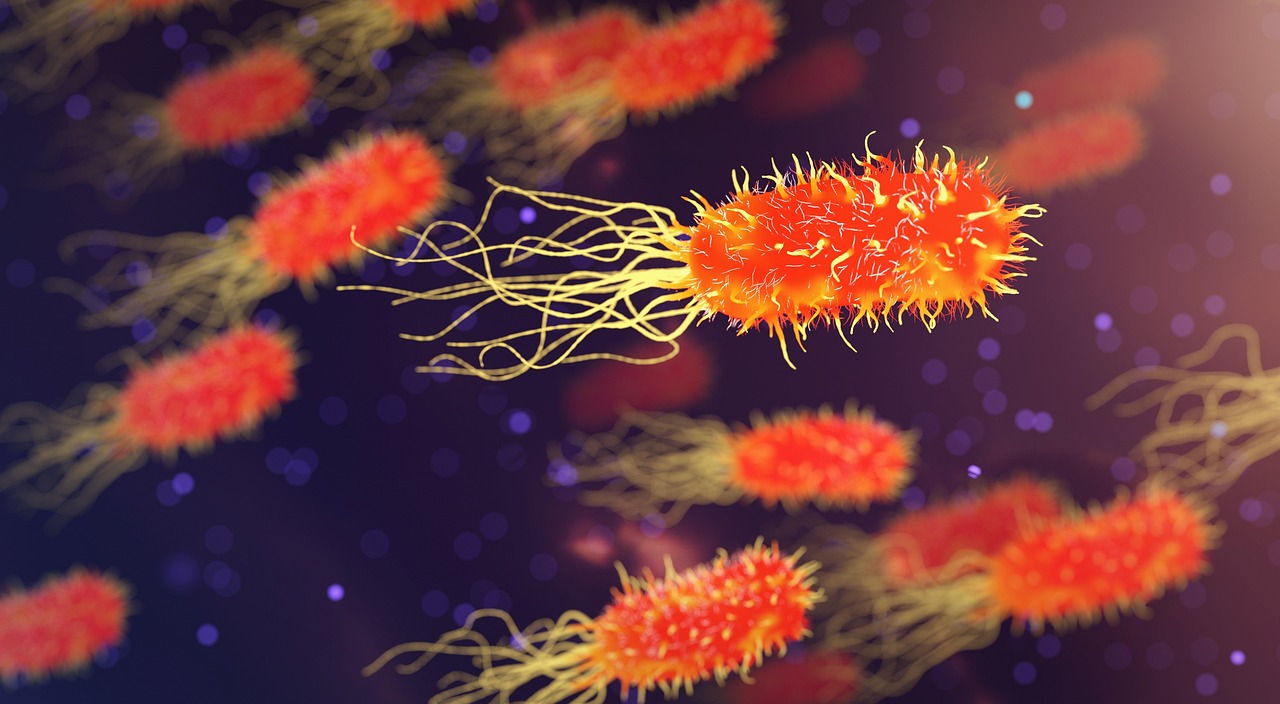Bed bugs, those tiny, blood-sucking pests that infest our homes and hotels, may seem like nothing more than a nuisance. However, they play a much more significant role than just causing itchy bites and sleepless nights. In fact, bed bugs have the potential to transmit diseases, making them a serious health concern.
Understanding the biology of bed bugs is crucial in comprehending their ability to spread diseases. These insects feed on human blood, and once they bite, they inject saliva that contains various pathogens. This saliva can transmit harmful microorganisms, including bacteria, viruses, and parasites, directly into the bloodstream. Consequently, bed bug bites can lead to a range of health risks, from mild skin irritations to severe allergic reactions.
While bed bugs themselves are not known to carry life-threatening diseases, they have been implicated as potential vectors for various infections. Diseases such as Chagas disease, hepatitis B, and even antibiotic-resistant bacteria like MRSA have been associated with bed bug infestations.
To protect yourself and your loved ones from these pesky critters and their potential disease transmission, it is essential to take preventive measures. Regularly inspecting and cleaning your living spaces, using bed bug-proof mattress and pillow covers, and practicing good hygiene can help minimize the risk of infestation.
If you find yourself dealing with a bed bug infestation, it is crucial to seek effective treatment and eradication methods. Professional pest control services and thorough cleaning routines can ensure the elimination of these pests from your home, reducing the risk of disease transmission.
In conclusion, while bed bugs may seem like harmless pests, they can pose a significant threat to our health. By understanding their biology, recognizing the diseases they may transmit, and taking preventive measures, we can protect ourselves and our communities from the potential dangers associated with bed bug infestations.
Understanding the Biology of Bed Bugs
Now let’s dive into what bed bugs are all about and how they impact your life.
Bed bugs, scientifically known as Cimex lectularius, are small, wingless insects that feed on the blood of humans and animals. They are reddish-brown in color, about the size of an apple seed, and have flat bodies that allow them to hide in cracks and crevices. Bed bugs are primarily active at night and are attracted to warmth and carbon dioxide emitted by their hosts.
Understanding the biology of bed bugs is crucial in combating their infestations and preventing disease transmission. These pests have a unique life cycle consisting of five stages: egg, nymph, and adult. Female bed bugs can lay hundreds of eggs in their lifetime, which hatch in about 6 to 10 days. Nymphs undergo several molts before reaching adulthood.
It is important to note that while bed bugs are not known to transmit diseases directly, their bites can cause itching, secondary infections, and psychological distress. Additionally, their presence can lead to significant economic and social burdens. Therefore, understanding the biology and behavior of bed bugs is crucial for effective control and prevention strategies.
Health Risks Associated with Bed Bug Bites
Imagine waking up in the morning, feeling an intense itch on your skin and realizing that those tiny creatures lurking in your bed have left you with painful, red welts all over your body. Bed bug bites may not transmit diseases directly, but they can lead to various health risks.
Scratching the bites can cause secondary skin infections, such as impetigo or cellulitis. Some individuals may also experience an allergic reaction to the bites, resulting in severe itching, swelling, and even difficulty breathing.
Although rare, bed bugs have been found to carry certain pathogens, including bacteria, viruses, and parasites, which could potentially be transmitted through their bites. However, more research is needed to determine the actual risk of disease transmission.
It is important to seek medical attention if you experience any unusual symptoms or reactions to bed bug bites.
Diseases Potentially Transmitted by Bed Bugs
In this discussion, we will explore the diseases that can potentially be transmitted by bed bugs. Bed bugs have been found to carry and transmit various bacterial infections, including Staphylococcus aureus and Streptococcus pyogenes.
Additionally, they have been linked to the transmission of viral infections such as hepatitis B and Chagas disease.
Lastly, bed bugs have also been associated with the transmission of parasitic infections like Trypanosoma cruzi, the parasite that causes Chagas disease.
It’s important to be aware of these potential health risks and take appropriate measures to prevent and control bed bug infestations.
Bacterial infections
Bed bugs can actually spread bacterial infections, adding to the list of reasons why we don’t want these pesky critters in our homes. While their primary method of feeding is on human blood, bed bugs aren’t picky eaters. They’ll feed on any warm-blooded creature they can find, including rodents and birds.
When they bite, bed bugs inject saliva into their victim, which can contain a variety of bacteria. This saliva acts as a medium for the transmission of bacterial pathogens, such as Staphylococcus aureus and Streptococcus pyogenes. These bacteria can cause skin infections and even more serious systemic infections. Research has shown that bed bugs can harbor and transmit these bacteria, making them a potential source of infection.
Therefore, it’s crucial to take immediate action if you suspect a bed bug infestation. This will help prevent the spread of bacterial infections in your home.
Viral infections
Viral infections, such as the common cold or influenza, can also be spread by these tiny pests, further highlighting the importance of addressing a bed bug infestation promptly.
While it may seem surprising, studies have shown that bed bugs can carry and transmit certain viruses. For example, researchers have found evidence of bed bugs carrying the hepatitis B virus, which can cause liver inflammation and severe illness. Additionally, bed bugs have been found to carry the Chikungunya virus, which causes fever, joint pain, and rash.

These findings suggest that bed bugs have the potential to contribute to the spread of viral infections within communities. Therefore, it’s crucial to take immediate action if you suspect a bed bug infestation in your home or workplace. By doing so, you can help prevent the transmission of these harmful viruses and protect yourself and others from potential illness.
Parasitic infections
Parasitic infections can pose a serious threat to your health, lurking within your body and causing harm without you even realizing it. Bed bugs, although primarily known for their irritating bites, have also been found to transmit parasitic infections.
One such parasite is Trypanosoma cruzi, which causes Chagas disease. Research has shown that bed bugs can acquire the parasite by feeding on infected hosts and then transmit it to humans through their bites. This transmission occurs when the bugs defecate near their feeding site, allowing the parasite to enter the body through broken skin or mucous membranes. Once inside, the parasite can cause severe symptoms, including fever, fatigue, and organ damage.
To prevent parasitic infections from bed bugs, it is crucial to maintain good hygiene, regularly inspect and clean your sleeping area, and promptly address any infestations.
Preventive Measures to Avoid Bed Bug Infestations
To prevent bed bug infestations, there are several key measures you can take. Firstly, it’s important to regularly clean and declutter your living space, as bed bugs thrive in cluttered environments.
Additionally, properly sealing cracks and crevices in walls, floors, and furniture can help prevent bed bugs from entering your home.
Lastly, using mattress and furniture protectors can provide an extra layer of defense against bed bugs, as these protectors act as a barrier between the bugs and your sleeping or sitting areas.
Following these preventive measures can greatly reduce the risk of a bed bug infestation in your home.
Regular cleaning and decluttering
If you want to keep those pesky bed bugs at bay, make sure you regularly clean and declutter your living space. Regular cleaning and decluttering are essential preventive measures against bed bug infestations.
Bed bugs thrive in cluttered environments where they can find hiding spots, so keeping your living space tidy is crucial. Vacuuming regularly, especially in areas where bed bugs are likely to hide, such as mattresses, box springs, and furniture, can help remove any existing bed bugs and their eggs.
Additionally, decluttering your home reduces potential hiding spots for bed bugs, making it easier to detect and eliminate them. Remember to dispose of infested items properly and wash and dry your bedding regularly at high temperatures to kill any bed bugs or eggs.
By incorporating regular cleaning and decluttering into your routine, you can significantly reduce the risk of a bed bug infestation.
Properly sealing cracks and crevices
Ensuring a tight seal on cracks and crevices is essential in preventing bed bug infestations from infiltrating your home. Bed bugs are incredibly small and can squeeze through even the tiniest of openings, making it crucial to seal up any potential entry points. These pests are known for their ability to hide in small spaces, such as cracks in walls, baseboards, and furniture.
By properly sealing these areas, you can greatly reduce the risk of bed bugs finding their way into your living space. To effectively seal cracks and crevices, start by thoroughly inspecting your home for any gaps or openings. Use caulk or sealant to fill in any visible cracks in walls or baseboards. Pay close attention to areas where pipes or wires enter your home, as these are common entry points for bed bugs.
Additionally, consider using weatherstripping on doors and windows to create a tight seal. It’s also important to regularly inspect and maintain any furniture or upholstery for tears or openings that may need to be repaired. By taking these preventative measures, you can significantly reduce the chances of a bed bug infestation in your home.
Remember to be thorough and diligent in your sealing efforts, as even the smallest openings can provide an entry point for these pests.
Using mattress and furniture protectors
One effective way to prevent bed bug infestations is by using mattress and furniture protectors. These protective covers act as a barrier, preventing bed bugs from infesting your mattress and furniture.
Bed bugs are known to hide in cracks and crevices, but with the use of these protectors, they’re unable to penetrate and establish their presence. Research studies have shown that mattress and furniture protectors have been successful in reducing bed bug infestations. In fact, a study conducted by the University of Kentucky found that using mattress encasements reduced the number of bed bugs in infested apartments by over 90%.
It’s important to choose protectors that are specifically designed for bed bug prevention, as they’re made of a tightly woven fabric that prevents bed bugs from entering or exiting.
By using mattress and furniture protectors, you can significantly reduce the risk of bed bug infestations and protect yourself from potential health risks associated with these pests.
Effective Treatment and Eradication of Bed Bugs
Treating and getting rid of bed bugs is essential for protecting our health and maintaining a pest-free environment. Effective treatment and eradication of bed bugs require a comprehensive approach.
The first step is to identify the infested areas and thoroughly clean them. Vacuuming is crucial to remove bed bugs and their eggs, especially in cracks and crevices. It’s important to wash all bedding, linens, and clothing in hot water and dry them on high heat to kill any remaining bugs.
Chemical treatments, such as insecticides, may also be necessary to eliminate bed bugs. However, it’s essential to follow the instructions carefully and use products specifically labeled for bed bug control. Professional extermination services can provide additional assistance and expertise in eradicating bed bugs.
Remember, early detection and prompt action are key in effectively treating and eliminating bed bugs.
Frequently Asked Questions
How do bed bugs reproduce and multiply in infested areas?
Bed bugs reproduce and multiply in infested areas by mating and laying eggs. The female bed bug can lay up to 5 eggs per day, which hatch in about 6-10 days. This rapid reproduction allows the bed bug population to grow quickly in infested areas.
Can bed bugs survive in extreme temperatures or harsh environments?
Yes, bed bugs can survive in extreme temperatures and harsh environments. They have been found to withstand both freezing temperatures and high heat. However, extreme temperatures alone are not enough to eliminate a bed bug infestation.
Are there any natural predators or enemies of bed bugs?
Yes, there are natural predators and enemies of bed bugs. Some examples include spiders, ants, and certain types of parasitic wasps. These predators can help to control bed bug populations in certain environments.
What are some common misconceptions about bed bugs?
Common misconceptions about bed bugs include: they only infest dirty homes, they are only found in beds, they are too small to see, and they only bite at night. However, these beliefs are not accurate.
How long can bed bugs survive without feeding on a host?
Bed bugs can survive without feeding for up to several months, depending on environmental conditions. However, they typically feed every 5-10 days. This ability to survive long periods without a host contributes to their resilience and ability to spread.
Conclusion
In conclusion, it’s evident that bed bugs play a significant role in disease transmission. Their ability to bite and feed on human blood increases the risk of various health issues. Although bed bugs aren’t known to directly transmit diseases, their bites can lead to secondary infections and allergic reactions.
Preventive measures such as regular cleaning, sealing cracks, and using bed bug-proof covers can help avoid infestations. Additionally, effective treatment methods like heat treatment and insecticide application can eradicate bed bugs and ensure a safer living environment.
It’s crucial to take these measures seriously to protect ourselves and our loved ones from the potential risks associated with bed bugs.










